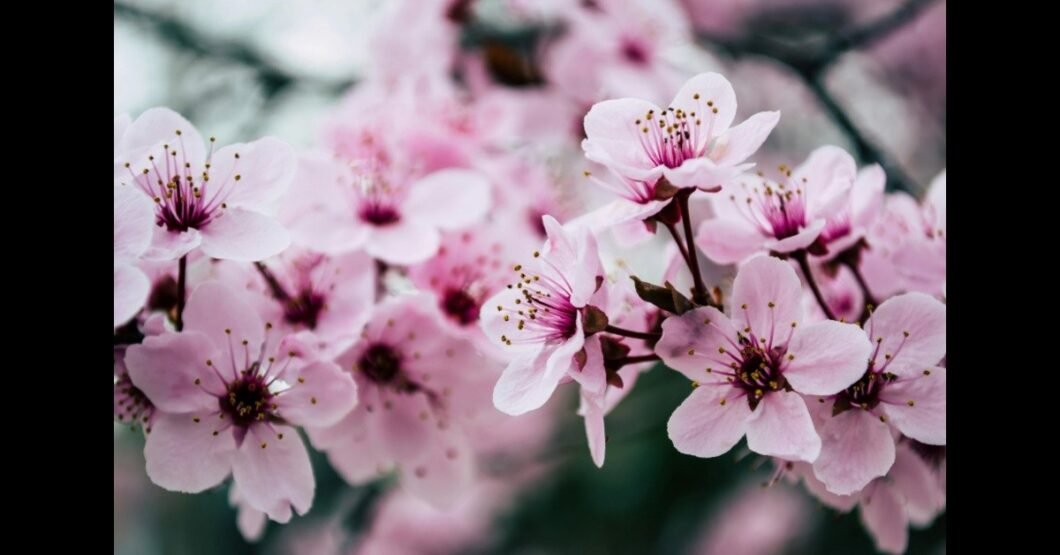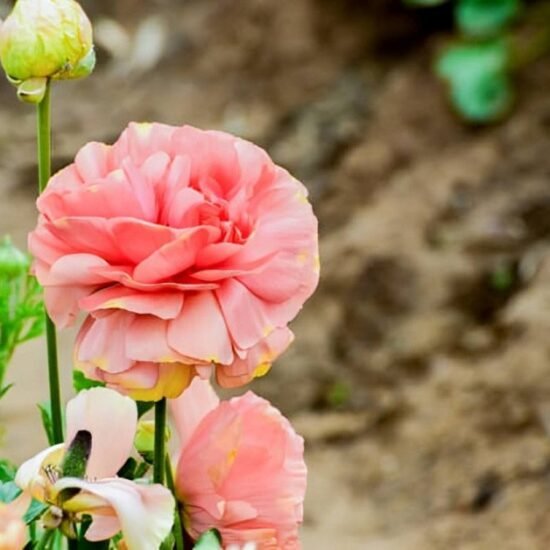Introduction
There are hardly any flowering trees that perplex human imagination as much as the flor de cerezo, or the cherry blossom. The cherry blossom, with its short-lived but spectacular beauty, has inspired poetry, festivals, and millions of followers all over the world. However, in addition to parks and the typical Japanese garden, a number of homeowners are also finding out that cherry blossom trees are indeed capable of being planted in personal gardens with proper care and are capable of bringing seasonal magic to your own backyard.
Here is an all-inclusive guide to everything you need to know about growing, tending, and enjoying flor de cerezo in the home gardening situation. Different varieties of cherry blossom trees, the best methods of planting, their care, flowering, and even symbolism will give you a lot of in-depth information about the phenomenon of this special tree and how you can use it in your garden.
You may be a beginner gardener or a seasoned horticulturist who wants to bring a touch of sophistication and beauty to your garden; either way, this article will provide you with the knowledge and tips necessary to have your flor de cerezo flourish like a rose every year.
What Is a Flor de Cerezo? Understanding Cherry Blossoms
- The word “flor de cerezo” is used to describe beautiful flowers of cherry trees, typically belonging to the genus Prunus, especially to Prunus serrulata (cherry or Japanese cherry). Worldwide, more so in Japan, Korea, China, and even Europe and the Americas, these trees are renowned due to their rapid yet gorgeous flowering period.
Characteristics of Flor de Cerezo:
- Bloom Period: 1-2 weeks or a handful of days, usually during the spring.
- Colors: White to dark pink, depending on species and cultivar.
- Size: The size of trees varies between small (6 ft) and large (40 ft).
- Growth Zones: USDA zones 5-9 are best for growth.
- Life span: 15-40 years, depending on species.
Symbolism:
- Beauty and transience (Japanese culture)
- New beginnings
- Peace and serenity
Best Varieties of Flor de Cerezo for Home Gardens
The cherry blossoms have hundreds of cultivars, yet there are those that are better adapted to be planted in homes based on size, level of care, and beauty.
Top 5 Cherry Blossom Varieties:
| Variety Name | Bloom Color | Height | Ideal Zone | Highlights |
| Somei Yoshino | Pale pink | 25–40 ft | 5–8 | Iconic in Japan, graceful form |
| Kwanzan | Deep pink | 15–30 ft | 5–9 | Double blossoms, long bloom |
| Yoshino Weeping | White | 15–25 ft | 6–9 | Elegant drooping branches |
| Okame | Bright pink | 15–30 ft | 6–9 | Early bloomer, compact |
| Autumnalis | Pink/white | 20–35 ft | 5–8 | Blooms twice a year |
Selection Tips:
- Select according to climate area, space available, and maintenance capability.
- Dwarf or weeping varieties are considered to be used in smaller areas.
How to Plant Flor de Cerezo in Your Garden
The cherry blossom tree will not just grow on its own, and thus a little planning is required before a tree is planted.
Step-By-Step Planting Guide:
- Choose the Right Location
-
-
- Full sunlight (6–8 hours daily)
- drained, moderately acidic earth.
-
- Dig the Hole
-
-
- Depth: Same as root ball
- Diameter: 23 times wider than the root ball.
-
- Prepare the Roots
-
-
- Gently loosen root ball
- Prune any dead/damaged roots
-
- Plant and Backfill
-
-
- Position upright
- Fill with native soil containing compost.
-
- Water Generously
-
-
- Moist (not wet) soil during the first few weeks.
-
- Mulch and Stake
-
- Add 2–3 inches of mulch
- Stake if windy or unstable
Pro Tips:
- Do not plant close to foundations or concrete (roots can spread).
- Lasting straw: Fall or spring.
Flor de Cerezo Care: Watering, Feeding, and Pruning
Maintenance to guarantee long-lasting blooms and the well-being of the trees is ensured after planting.
Watering Schedule:
- Year 1: 1–2 deep waterings per week
- Mature Trees: Only in times of drought or dry spells.
Fertilizing:
- Apply moderate, slow-release fertilizer at the beginning of spring.
- Do not over-fertilize—this may produce too many leaves and fewer flowers.
Pruning Tips:
- Pruning at the end of winter or right after flowering.
- Prune away dead, inward-growing, or crossing branches.
- Clean the equipment to prevent bacterial or fungal infection.
Common Mistakes:
- Overwatering
- Cutting during blooming
- Heavy use of nitrogen
Blooming Cycle: When and How Flor de Cerezo Blossoms
The most interesting thing to do with flor de cerezo is that its interval of bloom is so small and so splendid an exhibition it gives.
Typical Bloom Schedule:
| Variety | Blooming Month (Northern Hemisphere) |
| Okame | February–March |
| Yoshino | March–April |
| Kwanzan | April–May |
| Autumnalis | Spring + Early Fall |
Spring and Early FallHow to Maximize Blooms:
- Plant in high-sun areas
- It is important not to prune in pre-bloom weeks.
- In late winter apply phosphorous-rich fertilizer.
Lifespan of Blossoms:
- Normally 7-14 days, much influenced by the rain and wind.
Flor de Cerezo in Containers: Is It Possible?
Limited space? Cherry blossoms do grow in pots—yes, dwarf ones.
To make Potted Flor de Cerezo:
- Big container: 20-inch diameter or bigger.
- Use potting soil with compost that is well draining.
- Select a small or patio variety such as Fuji Cherry.
- Water in the dry season daily.
- Re-pot every 2–3 years
Benefits:
- Very good on patios and balconies.
- Soil and moisture are easier to control.
- Can live outdoors temporarily in frost.
Flor de Cerezo and Seasonal Garden Design
In addition to being beautiful as trees in their own right, flor de cerezo could also be included in a more extensive landscape vision.
Design Pairings:
- Combine with evergreens to get greenery throughout the year.
- Plant beneath with such bulbs as tulips or daffodils.
- Japanese aesthetics of rock gardens are effective.
- Add azaleas or camellias to add color.
Placement Suggestions:
- Along garden paths
- Surrounding a fountain or a pond.
- access points or front yard centers.
Pests & Diseases Affecting Flor de Cerezo Trees
Flor de cerezo, like any other plant, is susceptible to pests and diseases.
Common Pests:
- Aphids: Repugnant deposits, grotesque development.
- Japanese beetles
- Spider mites
Common Diseases:
- Powdery mildew
- Cherry leaf spot
- Canker fungus
Prevention & Treatment:
- Apply Neem oil or insecticidal soap that is organic.
- Use the copper fungicide during the dormant season.
- Cut and burn away diseased leaves.
Healthy Practice Tips:
- Avoid overhead watering
- Keep base free of leaves
- Keep the air moving by pruning frequently.
Flor de Cerezo Around the World: Cultural Significance
Cherry blossoms are not simply flowers, but they are symbols that have strong roots in different cultures.
Cultural Insights:
- Japan: Sakura festivals, the festivals of transience.
- United States: Japanese gift of 1912 (Washington, D.C. festival)
- China: The icon of assurance and affection.
- South Korea: Spring, the love relationships.
Activities:
- Hanami (picnics under cherry trees)
- Reading and tea ceremonies of poetry.
- Food and desserts in the form of cherries.
Planting this tree in your garden will help you be connected with the world of gardening and contemplation.
Where to Buy Flor de Cerezo Trees
To be successful in the long term, it is important to source a healthy tree.
Where to Shop:
- Local nurseries
- Online garden centers
- Nature Hills
- Fast-Growing Trees
- Arbor Day Foundation
What to Look For:
- Responsible sellers with planting zone filters.
- Bare-root vs. potted options
- Grafted cultivars vs. seed-grown.
- Disease resistance tags
Buying Option
| Buying Option | Pros | Cons |
| Local nursery | Regional advice, inspect plants | Higher price |
| Online retailer | Convenience, variety | Shipping stress on plant |
FAQs
Does flor de cerezo survive in hot temperatures?
There are also varieties that are warm tolerant, yet flor de cerezo prefers cool to moderate temperatures (zones 5–8).
What is the height of a cherry blossom tree?
It depends on the variety. Others are less than 15 ft, and others are 40 ft high.
What is the duration of the blooming?
Usually 7-14 days, although this depends on climate, species, and care.
Does it make Flor de Cerezo high-maintenance?
It doesn’t need much care once it is in place, just seasonal pruning, watering, and some fertilizer.
Will you be able to grow flor de cerezo from seeds?
Yes, but it’s a long process. The majority of home gardeners are fond of grafted or nursery-grown saplings to bloom sooner.
Conclusion
It is not just a beautiful tree to plant in your home garden, but rather it is a way to bring nature, tradition, and calmness into your home in the form of a flor de cerezo. These beautiful trees provide visual seasonal beauty, habitat to wildlife, and rich cultural meaning.
Planned, the correct kind, and with a bit of attention, your cherry blossom tree will be one of the most valued living elements of your garden, one that brings happiness in the spring and the beauty that honors the soul.
So why wait? Allow the magical beauties of flor de cereal to turn your own backyard garden, one petal at a time.




